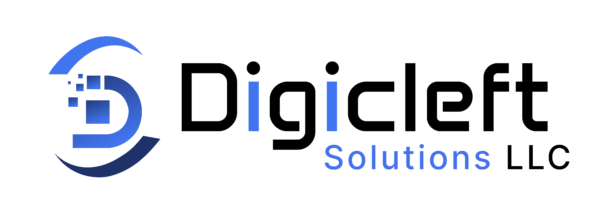
Overview:
In today’s fast-evolving tech world, integrating artificial intelligence into apps has become more than just a trend—it’s a competitive necessity. OpenAI, one of the leading providers of AI models and APIs, offers developers a powerful toolkit to transform applications with features like natural language processing (NLP), image generation, and coding assistance. Whether you’re building a chatbot, personal assistant, content generator, or intelligent search engine, OpenAI’s API can take your app to the next level.
In this comprehensive guide, we at Digicleft Solutions will walk you through the process of integrating AI Open Source into your application—from setting up your API keys to building dynamic interactions. Whether you’re a beginner or an experienced developer, this step-by-step tutorial will provide you with the clarity and confidence to leverage AI effectively.
Why Integrate OpenAI into Your App?
Before we dive into the technical steps, here are some compelling reasons why developers are choosing OpenAI:
- Real-time text generation and summarization
- Human-like chatbot experiences
- Multilingual support
- Coding assistance and debugging
- Image and video content creation (via DALL·E or Sora)
- Automation of repetitive customer support tasks
These capabilities can dramatically increase user engagement, reduce manual workload, and create personalized experiences on a scale.
What Do You Need Before You Start?
To integrate OpenAI into your app, ensure you have the following:
- A valid OpenAI account
- An API key from the OpenAI platform
- A basic understanding of the programming language your app is built with (e.g., JavaScript, Python, Java, etc.)
- A frontend or backend environment ready for testing
- An internet connection (AI Open Source is a cloud-based API)
Step 1: Get Your OpenAI API Key
- Go to https://platform.openai.com.
- Create or log into your account.
- Navigate to the API keys section.
- Click on “Create new secret key.”
- Copy and securely store the key—you won’t be able to see again.
Important: Never hard-code this key into public repositories or front-end code. Always keep it secure using environment variables.
Step 2: Install the OpenAI SDK or HTTP Client
Depending on your app’s language, install the OpenAI SDK or use a compatible HTTP client to interact with the API.
You can directly make HTTP requests using tools like Axios, Postman, or fetch.
Step 3: Build Your App Logic
Once you get a response from AI Open Source, integrate it into your app’s core logic. This could be:
- Rendering Chatbot responses in your UI
- Using AI-generated code in your IDE (Integrated Development Environment)
- Summarizing user-uploaded documents
- Creating real-time customer support answers
You can loop this logic for continuous interaction or implement triggers based on user input.
Step 4: Deploy and Monitor
- Use Environment Variables
Store your API key in .env or a secret management tool.
- Monitor Usage and Costs
OpenAI provides detailed usage analytics. Keep track to avoid surprise billing.
- Handle API Limits and Errors
Implement retries, fallbacks, and user-friendly error messages for failed responses or rate-limited requests.
Popular Use Cases You Can Implement
1. AI Chatbot for Customer Support
Let AI Open Source handle FAQs, complaints, and appointment booking.
2. Code Assistant for Developers
Use Codex models to suggest code snippets or fix bugs.
3. Content Generator
Generate blog posts, product descriptions, or marketing emails dynamically.
Use OpenAI with Third-Party Platforms
You can combine OpenAI with platforms like:
- Zapier – Automate tasks
- Bubble.io – No-code integrations
- LangChain – Advanced app chaining and retrieval-augmented generation (RAG)
- Streamlit/Flask – For building quick Python web apps
Testing & Optimization Tips
- Use the Playground on OpenAI’s platform to test prompts.
- Fine-tune your prompt engineering for accuracy and clarity.
- Limit token usage to stay within budget and improve performance.
- Log user queries to improve future versions of your app.
Things to Watch Out For
- Token Limits: GPT-4 and other models have limits on how much input/output they can process.
- Security & Privacy: Don’t send sensitive user data without proper encryption and consent.
- Latency: Response times can vary depending on model load. Use spinners or progress indicators.
- Bias & Content Filtering: AI responses may require moderation depending on your app’s audience.
Final Word:
Integrating OpenAI into your app isn’t just about adding a trendy feature—it’s about unlocking a new level of functionality and intelligence. With the rise of generative AI, apps can now think, write, draw, and reason with unprecedented fluidity. Whether you’re enhancing customer support or building the next big AI SaaS platform, OpenAI provides the building blocks.
At Digicleft Solutions LLC, we specialize in building smart, scalable, AI-integrated web and mobile applications. If you’re ready to elevate your app with OpenAI or need expert consultation, we’re here to help.


